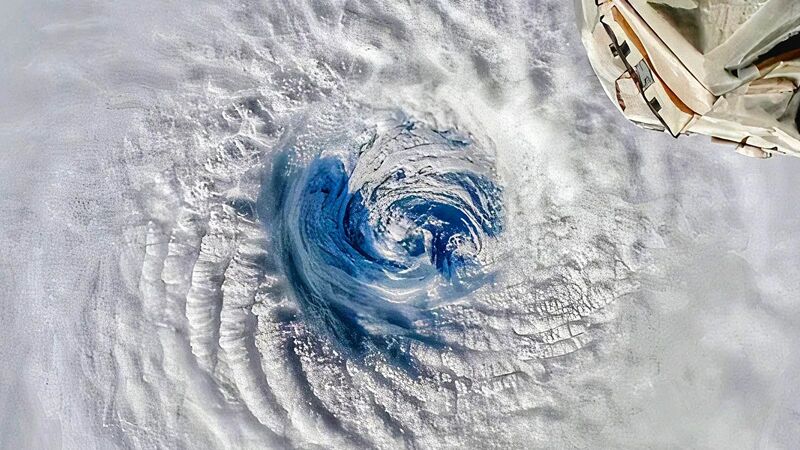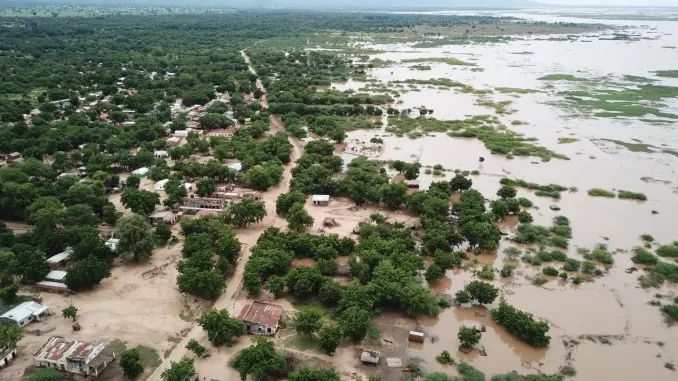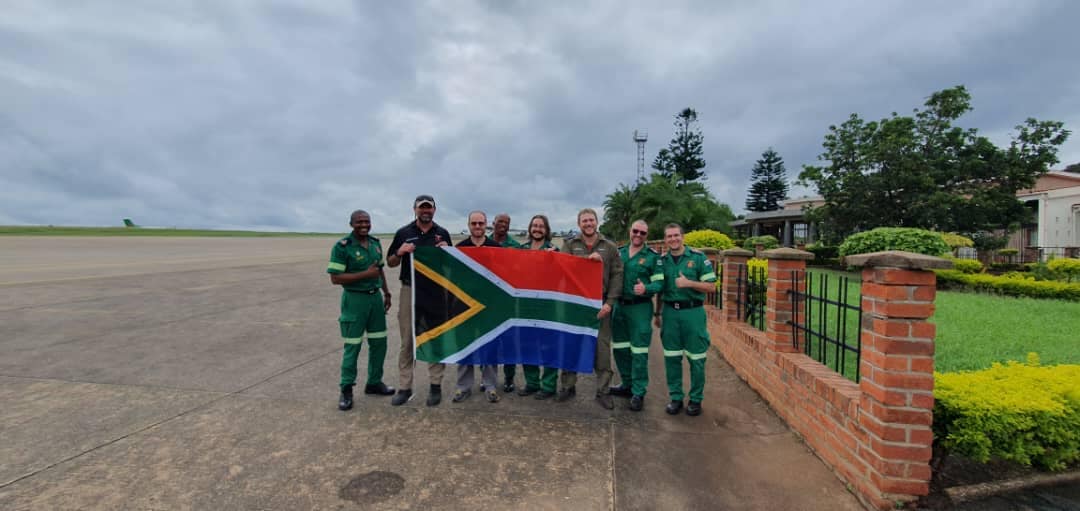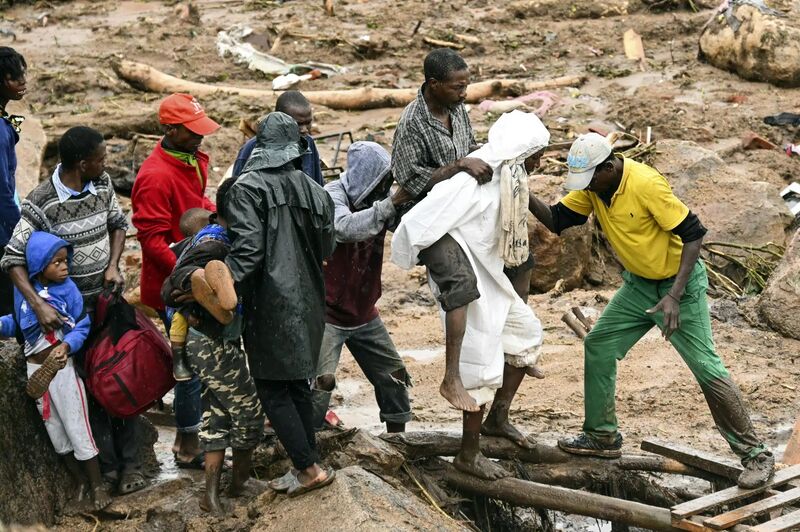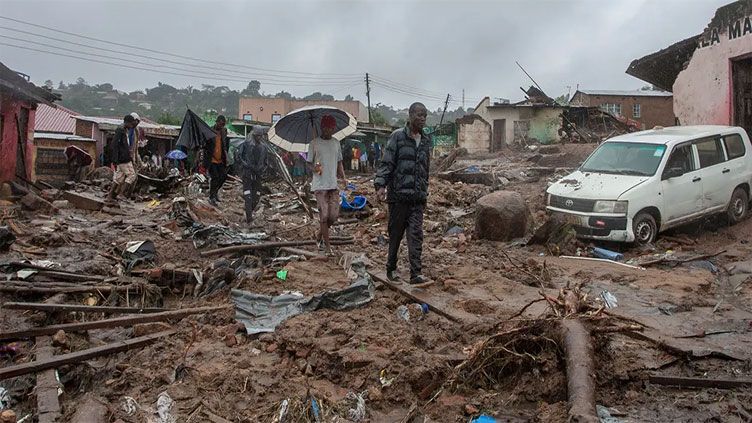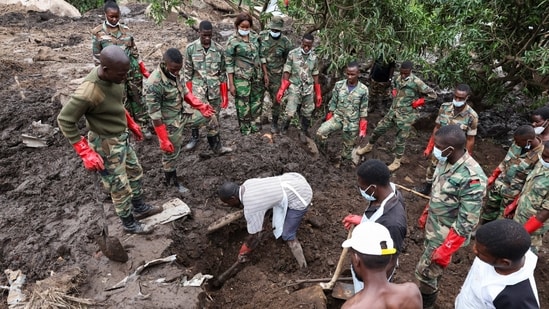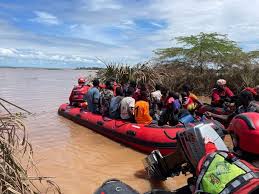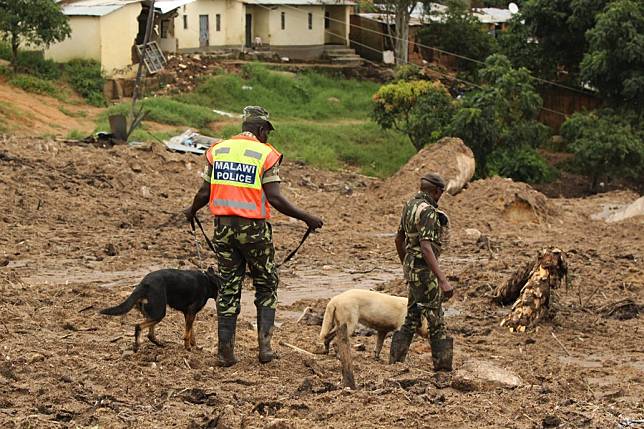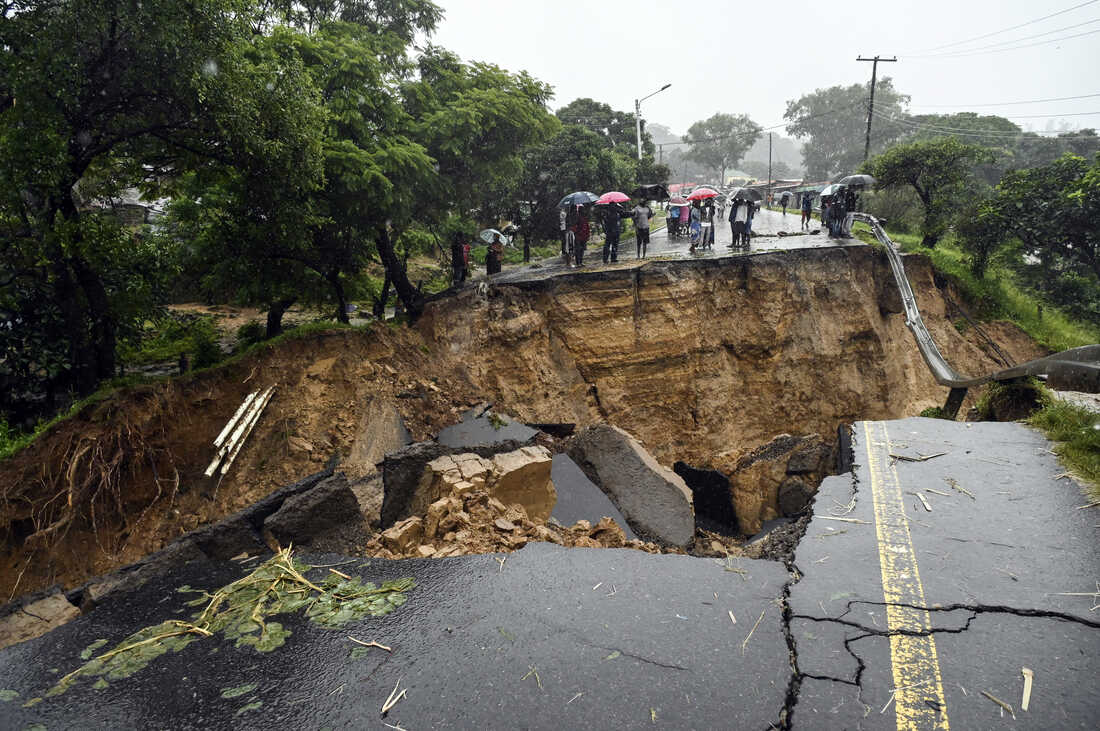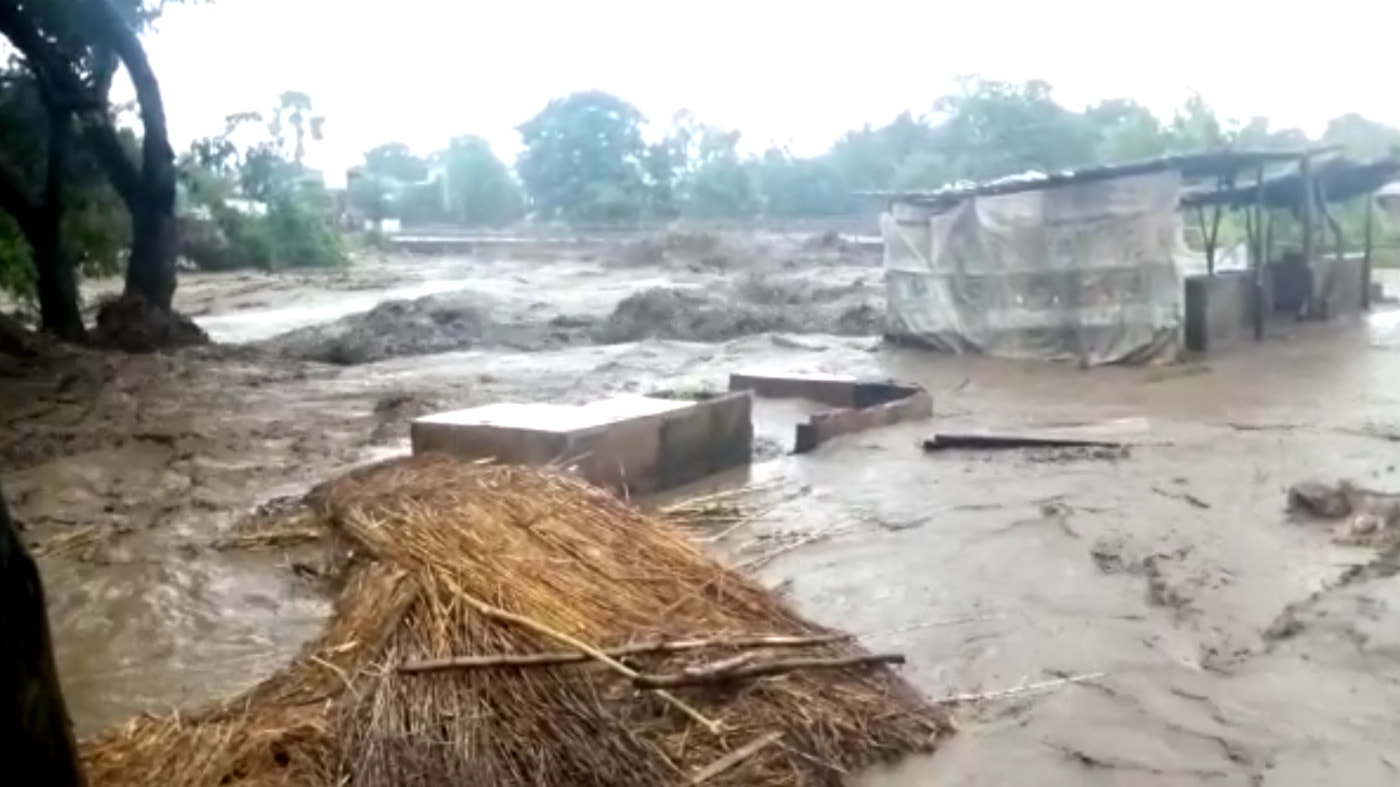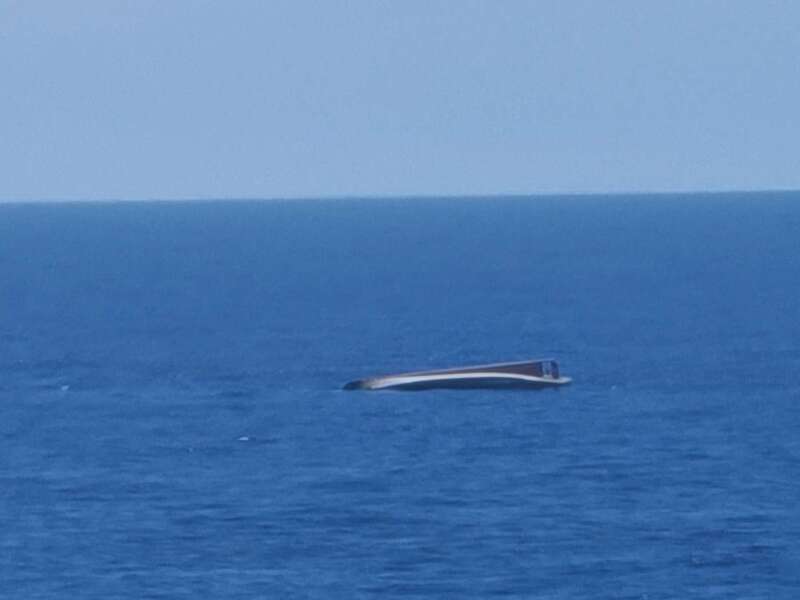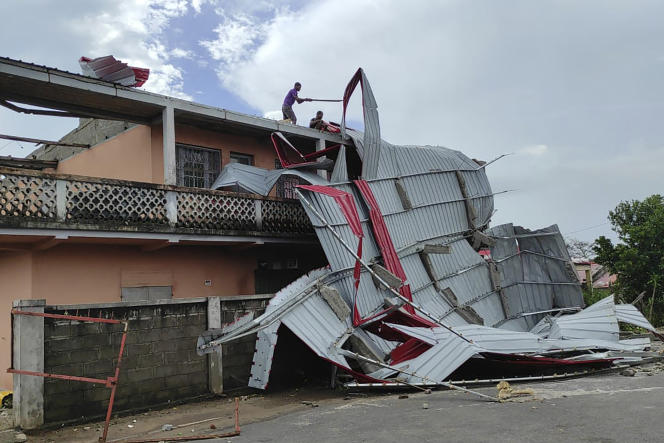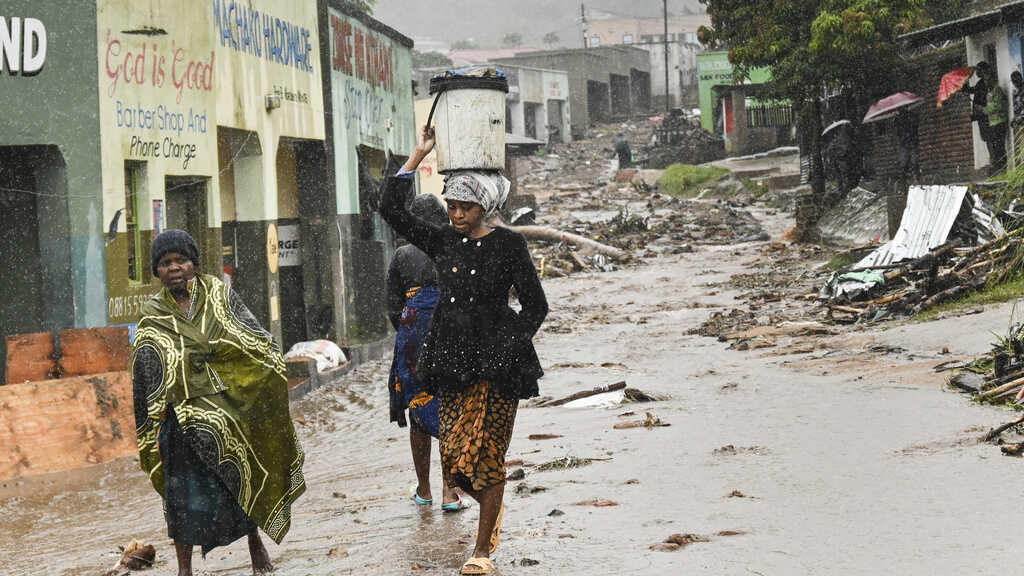- Home
- Magazines
-
Newsletters
- 19 July 2024
- 12 July 2024
- 5 July 2024
- 28 June 2024
- 14 June 2024
- 7 June 2024
- 31 May 2024
- 24 May 2024
- 17 May 2024
- 10 May 2024
- 3 May 2024
- 26 April 2024
- 19 April 2024
- 12 April 2024
- 22 March 2024
- 15 March 2024
- 8 March 2024
- 1 March 2024
- 23 February 2024
- 16 February 2024
- 9 February 2024
- 26 January 2024
- 19 January 2024
- 12 January 2024
- 22 December 2023
- 1 December 2023
- 24 November 2023
- 10 November 2023
- 3 November 2023
- 27 October 2023
- 20 October 2023
- 13 October 2023
- 6 October 2023
- 29 September 2023
- 22 September 2023
- 15 September 2023
- 8 September 2023
- 25 August 2023
- 18 August 2023
- 11 August 2023
- 4 August 2023
- 28 July 2023
- 21 July 2023
- 14 July 2023
- 7 July 2023
- 30 June 2023
- 23 June 2023
- 15 June 2023
- 2 June 2023
- 26 May 2023
- 19 May 2023
- 12 May 2023
- 5 May 2023
- 28 April 2023
- 21 April 2023
- 14 April 2023
- 6 April 2023
- 31 March 2023
- 24 March 2023
- 17 March 2023
- 10 March 2023
- 3 March 2023
- 24 February 2023
- 17 February 2023
- 10 February 2023
- 3 February 2023
- 27 January 2023
- 13 January 2023
- 22 December 2022
- 15 December 2022
- 9 December 2022
- 2 December 2022
- 25 November 2022
- 18 November 2022
- 11 November 2022
- 4 November 2022
- Advertising
- Subscribe
- Articles
-
Galleries
- AOSH Firexpo 2024
- Midvaal Fit to Fight Fire 2024
- WoF KNP 2023 Gallery
- TFA 2023 Gallery
- DMISA Conference 2023
- ETS 2023 Gallery
- Drager Fire Combat and Rescue Challenge 2023
- AOSH Firexpo 2023
- Midvaal Fit to Fight Fire
- WC IFFD 2023
- NMU 13th Fire Management Symposium 2022
- JOIFF Africa Conference 2022
- ETS 2022 Gallery
- TFA 2022 Gallery
- IFFD 2018
- SAESI
- TFA
- WRC 2018
- WRC 2019
- A-OSH/Securex
- IFE AGM 2019
- ETS Ind Fire Comp Nov 2019
- ETS Challenge 2021
- Drager launch
- Drager Fire Combat and Rescue Challenge 2022
- TFA
- Contact
- Home
- Magazines
-
Newsletters
- 19 July 2024
- 12 July 2024
- 5 July 2024
- 28 June 2024
- 14 June 2024
- 7 June 2024
- 31 May 2024
- 24 May 2024
- 17 May 2024
- 10 May 2024
- 3 May 2024
- 26 April 2024
- 19 April 2024
- 12 April 2024
- 22 March 2024
- 15 March 2024
- 8 March 2024
- 1 March 2024
- 23 February 2024
- 16 February 2024
- 9 February 2024
- 26 January 2024
- 19 January 2024
- 12 January 2024
- 22 December 2023
- 1 December 2023
- 24 November 2023
- 10 November 2023
- 3 November 2023
- 27 October 2023
- 20 October 2023
- 13 October 2023
- 6 October 2023
- 29 September 2023
- 22 September 2023
- 15 September 2023
- 8 September 2023
- 25 August 2023
- 18 August 2023
- 11 August 2023
- 4 August 2023
- 28 July 2023
- 21 July 2023
- 14 July 2023
- 7 July 2023
- 30 June 2023
- 23 June 2023
- 15 June 2023
- 2 June 2023
- 26 May 2023
- 19 May 2023
- 12 May 2023
- 5 May 2023
- 28 April 2023
- 21 April 2023
- 14 April 2023
- 6 April 2023
- 31 March 2023
- 24 March 2023
- 17 March 2023
- 10 March 2023
- 3 March 2023
- 24 February 2023
- 17 February 2023
- 10 February 2023
- 3 February 2023
- 27 January 2023
- 13 January 2023
- 22 December 2022
- 15 December 2022
- 9 December 2022
- 2 December 2022
- 25 November 2022
- 18 November 2022
- 11 November 2022
- 4 November 2022
- Advertising
- Subscribe
- Articles
-
Galleries
- AOSH Firexpo 2024
- Midvaal Fit to Fight Fire 2024
- WoF KNP 2023 Gallery
- TFA 2023 Gallery
- DMISA Conference 2023
- ETS 2023 Gallery
- Drager Fire Combat and Rescue Challenge 2023
- AOSH Firexpo 2023
- Midvaal Fit to Fight Fire
- WC IFFD 2023
- NMU 13th Fire Management Symposium 2022
- JOIFF Africa Conference 2022
- ETS 2022 Gallery
- TFA 2022 Gallery
- IFFD 2018
- SAESI
- TFA
- WRC 2018
- WRC 2019
- A-OSH/Securex
- IFE AGM 2019
- ETS Ind Fire Comp Nov 2019
- ETS Challenge 2021
- Drager launch
- Drager Fire Combat and Rescue Challenge 2022
- TFA
- Contact
|
31 March 2023
|
Cyclone Freddy becomes longest-lived tropical cyclone on record
|
|
|
|
Cyclone Freddy was the longest-lived tropical cyclone on record, beating the previous record of Hurricane John in 1994. It also has the highest accumulated cyclone energy (ACE) of any tropical cyclone on record worldwide, surpassing Hurricane Ioke in 2006. Additionally, Freddy is the only known tropical cyclone to achieve seven separate rapid intensification cycles. While in the Australian region cyclone basin, the storm quickly intensified and became a Category 4 severe tropical cyclone, before it moved into the South-West Indian Ocean basin.
The Joint Typhoon Warning Centre (JTWC) estimated Freddy's peak strength, equivalent to Category 5 strength on the Saffir–Simpson scale. On 19 February 2023, Météo-France (MFR) upgraded it to a very intense tropical cyclone. Freddy made its first landfall near Mananjary, Madagascar. Freddy rapidly weakened overland but re-strengthened in the Mozambique Channel. Soon afterward, Freddy made its second landfall just south of Vilankulos, Mozambique.
On 2 March, the remnant low of Freddy began to acquire tropical characteristics after re-emerging into the channel. Soon after, Freddy intensified, becoming a tropical cyclone. Then, Freddy made its third landfall in Quelimane, Zambezia Province, Mozambique, Freddy gradually deteriorated and last noted on 14 March. Catastrophic flooding and extensive wind damage ensued, resulting in 893 fatalities and 552 missing across the Madagascar Mozambique, Malawi and Zimbabwe.
Impact
In general, Freddy produced extraordinarily heavy rains, primarily in Mozambique and Malawi. Heavy winds lashed areas as well, and infrastructure took heavy hits due to excessive flooding. Freddy's stalling over Mozambique and Malawi worsened the rains immensely.
Mauritius
According to the MMS, the cyclone passed within 200km of the island, just north of Grand Bay. Strong winds and waves were observed along the northern coast of Mauritius. Winds in Port Louis reached 104km/h while a peak gust of 154km/h was observed on Signal Mountain. Flooding and gale-force winds also affected the country.
Around 4h00am local time on 20 February 2023, contact was lost with the Taiwanese-flagged fishing trawler LV Lien Sheng Fa with a crew of 16 just outside the territorial waters of Mauritius. The crew included a Taiwanese captain and 15 Indonesian fishermen. An alert was sent out by Taiwan's Fisheries Agency for the missing vessel on 23 February. The MV Star Venture found the ship capsized on 25 February about 400km northeast of Mauritius within the nation's exclusive economic zone. Later sorties by the aircraft Dornier and the ship CGA Baracuda failed to find any survivors. Mauritius deployed a diving team to confirm the identity of the ship. The vessel's lifeboat was confirmed to have been deployed; however, it has not been found as of 3 March.
Réunion
Freddy impacted Réunion on 20 to 21 February, with its effects being relatively limited. Nearly 25 000 customers were left without power at the height of the cyclone; all but 500 had their service restored within a day. In Saint-Paul, 20 tons of mangoes were destroyed. Highway RD48 in Salazie was closed due to a landslide. Eleven mobile sites maintained by Orange SA were knocked offline in Tampon, Saint-Louis and Saint-Paul. On 23 February, Foehn winds on the backside of the storm led to temperatures reaching 31 to 36 degrees Celsius along the southwestern coast of Réunion.
Madagascar
Damage was less than expected due to Freddy's weaker than forecasted winds and early preparations. Freddy made its first landfall near Mananjary, which was still recovering from Cyclone Batsirai a year earlier. In total, over 14 000 homes were affected, with 5 500 destroyed, 3 079 flooded and at least 9 696 damaged. At least 24 358 people were displaced, with over 12 000 in Mananjary alone.
Freddy also left 79 schools roofless, damaged 37 more and destroyed six. The storm's effects caused more than 11 000 to flee their homes. The impact zone of Freddy included 13 to15 municipalities. About 16km2 of land was flooded according to UNOSAT. Overall, the cyclone was responsible for 17 deaths and affected 299 000 people.
Mozambique
Exact figures for amounts killed per landfall vary by source but in all, Freddy left 198 dead and 1 074 970 were affected in the country.
First landfall
Cyclone Freddy made its first landfall in Mozambique (and second landfall overall) south of Vilanculos, Inhambane Province, causing heavy rains, strong winds, and rough seas. Some damage was reported, primarily due to fallen trees and rooftops. Public infrastructure and services have also suffered widespread damage, including 60 health units, 1 012 schools. At least 10 people died in the country during the first landfall. Over 166 600 were affected. Much of the southern half of the country saw rainfall totalling 200 to 500mm. Thousands of homes were damaged, with approximately 28 300 destroyed. 1 265km of road across many were damaged. More than 92 000 hectares of crops were affected and more than 18 700 hectares of crops were lost in areas where 400 000 were food insecure. The storm struck during a cholera outbreak, raising worries of the storm worsening its effects.
Second landfall
Freddy made its second landfall in Zambezia Province on 11 March, bringing torrential rainfall, storm surge and much stronger winds compared to the prior landfall. The Zambezi and Tambarara river basins had reported above-average water levels before its landfall. The power utility had turned off the electricity completely as a precaution against the cyclone. Locals reported seeing roofs torn off houses, broken windows, and streets flooded in Quelimane. Sustained winds of 175km/h, gusting up to 215km/h were recorded in the city. All flights were suspended due to the inclement weather brought by Freddy.
Communications and electrical supplies were cut early into the storm, hampering damage assessments. Power company Electricidade de Moçambique said that most areas had electricity restored by 11 March mid-afternoon. The nation's UNICEF chief of advocacy, communications and partnerships, Guy Taylor, stated that there was "lots of destruction" and that Freddy was "potentially a disaster of large magnitude". Taylor also noted that rural areas were completely destroyed. Access to clean water was effectively cut off in Quelimane.
State TV reported that hundreds were displaced in Freddy's wake. More than 650 houses in Marromeu District and over 3 000 in Sofala province were affected by flooding. The nation saw a year's worth of rainfall in just four weeks. Locals said localised flooding was an issue even before landfall. In a preliminary satellite evaluation of 24 000km2 of land, 900km2 was estimated to be flooded. Widespread areas received over 500 to 1 000mm of rainfall, with smaller, localised pockets of 1 000 to1 500mm, eclipsing the maximum accumulations of Cyclone Idai four years earlier. 348 000 hectares of cropland were damaged and over 800 000 people were living in flooded areas following Freddy. Cholera cases also increased among affected populations. A total of 8eight provinces were damaged by the cyclone. 1 017 schools took a hit and more than 5 000km of road were damaged. This includes the main national road, N1, which was restored by 21 March. A total of 103 000 houses were destroyed and another 25 000 had been flooded. Some 15 000 people were stranded when they moved to higher ground for protection.
The old provincial hospital in Quelimane had its roof blown off, making supporting those in need more difficult. Many people were left homeless during the storm and took shelter in schools, the latter being turned into reception areas. Large amounts of crop fields were flooded as well. The INGD stated that the storm's effects on Mozambique were worse than expected. Freddy affected areas were initially deemed safe beforehand. Overall, Freddy caused at least 143 deaths on its second arrival. At least 886 487 people were affected as well. An estimated 49 000 were displaced and another 280 were injured. At least 22 deaths from cholera were blamed on Freddy and the subsequent flooding.
Malawi
Before Freddy arrived in Malawi, the country had been experiencing its worst cholera outbreak in history. Freddy's effects increased fears among the public that it would worsen. Rainfall was heaviest in the southern region of the country. These districts include Blantyre, Phalombe, Mulanje, Chikhwawa, and Nsanje. Flash floods devastated many regions, washing away homes and people and leaving infrastructure ruined. The entire nation experienced blackout due to EGENCO shutting down power to avoid further damage to power-generating machines. The nation's hydroelectric power plant was rendered inoperable by debris. In terms of rainfall, over a month's worth of rain was dumped in just a day.
At least 676 people were killed in the onslaught of Freddy with 537 others missing and 1 332 injuries reported. At least 192 of these deaths were reported in Blantyre and at least 40 of whom were children according to Médecins Sans Frontières. 135 of them were in Mulanje as well. 180 000 people were displaced across the country and forced to evacuate their homes, with 500 000 affected in general. Among these 280 000 were children. There were also around 90 fatalities in Mulanje. More than 50 000 houses were damaged or destroyed. In terms of rainfall, over a month's worth of rain was dumped in just a day, totalling to six months of precipitation in six days. The small village of Mtauchira in Chiradzulu District was completely destroyed by a landslide that fell from Chambe Peak. At least seven people died and 40 were injured in the village while an unknown number of others were missing as of 14 March.
Over 430km2 of general land was flooded, causing many smallholder farmers to have their crops and fields lost to the storm. Approximately 204 833 hectares of cropland were inundated; 84 930 being submerged and 119 930 were washed away. The storm struck just as farmers were about to harvest, compounding to local food insecurities in the nation. Farms were also damaged and many were destroyed. Livestock was severely impacted, with 194 500 dying and a further 91 000 being injured. Notable rainfall recordings include a record-setting 458mm in 24 hours in Phalombe District. Several other districts also reported 300mm in the same time range. Flood waters rose in some areas days after Freddy died, with an analysed area of 5 000km2 increasing by 60km2 between 14 and 17 March. Houses which foundations were weakened by the system also collapsed in Mangochi District.
Dozens of houses were reported being washed away in floodwaters in Chilobwe. Schools in ten southern regions were ordered to be closed until 15 March. Heavy rains also were reported in Salima and Lilongwe. Malawian president Lazarus Chakwera declared a state of disaster in the southern regions. Victims were thought to be buried under rubble and debris. During Freddy's extended stay in the country, visibility remained at near-zero levels. Several roads and bridges were cut and many areas were cut off. Landslides across Chiradzulu Mountain blocked roadways, leaving Chiradzulu Boma inaccessible. It was stated that 14 districts suffered impacts from Freddy, equating to over half the country. Chakwera also said that 36 roads were broken, nine bridges washed away and there were still many villages inaccessible by 20 March.
Zimbabwe
Heavy rainfall extending from Freddy impacted eastern Zimbabwe for a prolonged period as it meandered over Mozambique and the Mozambique Channel. At the end of February as the storm moved over Mozambique, heavy rains and strong winds impacted the nation. Five homes and two schools had their roofs torn off in Mashonaland Central Province. One person was killed in Shamva on 26 February when the tree they were sheltering from the rain under collapsed. A second person was killed by unspecified causes. In Masvingo Province, one home was destroyed by rainfall and another was struck by lightning. Manicaland Province in particular was heavily affected with continuous rainfall from 12 to 14 March. Observed rainfall totals include 102mm in Nyanga and 97mm in Mukandi. Crops were adversely affected in the Chipinge and Chiredzi districts.
Elsewhere
Rainfall of at least 251mm occurred across regions of South Africa and Eswatini. Heavy rainfall also occurred in Zambia. Freddy did not directly affect the Australian coast with wind or rain but the system's swell reached the Northwest Shelf, with reporting 2m to 2,5m.
Longest-lasting tropical cyclone worldwide
Freddy holds the record for the longest-lasting tropical cyclone worldwide in recorded history, pending a formal investigation to be conducted by the World Meteorological Organisation, in order to determine whether Freddy truly tied or surpassed John's record. Freddy also holds the record for the all-time highest accumulated cyclone energy of a tropical cyclone worldwide, with an ACE of 87.01, breaking the former record of 85.26, set by Hurricane Ioke in 2006. Additionally, Freddy was the first tropical cyclone to undergo seven separate rounds of rapid intensification.
Before Freddy, no storms in the southern hemisphere had rapidly intensified more than three times. In the northern hemisphere, only three storms appear to have experienced four bouts of rapid intensification, including Hurricane Norman in 2018, Hurricane Emily in 2005 and Hurricane John in 1994. The WMO estimates that Freddy has produced roughly as much ACE as an average whole Atlantic hurricane season.
Sébastien Langlade, head of operations at the Météo-France's meteorological office in Réunion said one of the reasons it maintained its strength was its westerly trajectory, which kept Freddy over warmer seas. Langlade also stated that Freddy's length and strength were genuinely "remarkable" and urged for further research, particularly in relation to potential connections to climate change.
Freddy was one of only four systems, the others being cyclones Litanne in 1994 and Leon–Eline and Hudah in 2000, to travel the entirety of the southern Indian Ocean.
Sources: Washington Post, Wikipedia
The Joint Typhoon Warning Centre (JTWC) estimated Freddy's peak strength, equivalent to Category 5 strength on the Saffir–Simpson scale. On 19 February 2023, Météo-France (MFR) upgraded it to a very intense tropical cyclone. Freddy made its first landfall near Mananjary, Madagascar. Freddy rapidly weakened overland but re-strengthened in the Mozambique Channel. Soon afterward, Freddy made its second landfall just south of Vilankulos, Mozambique.
On 2 March, the remnant low of Freddy began to acquire tropical characteristics after re-emerging into the channel. Soon after, Freddy intensified, becoming a tropical cyclone. Then, Freddy made its third landfall in Quelimane, Zambezia Province, Mozambique, Freddy gradually deteriorated and last noted on 14 March. Catastrophic flooding and extensive wind damage ensued, resulting in 893 fatalities and 552 missing across the Madagascar Mozambique, Malawi and Zimbabwe.
Impact
In general, Freddy produced extraordinarily heavy rains, primarily in Mozambique and Malawi. Heavy winds lashed areas as well, and infrastructure took heavy hits due to excessive flooding. Freddy's stalling over Mozambique and Malawi worsened the rains immensely.
Mauritius
According to the MMS, the cyclone passed within 200km of the island, just north of Grand Bay. Strong winds and waves were observed along the northern coast of Mauritius. Winds in Port Louis reached 104km/h while a peak gust of 154km/h was observed on Signal Mountain. Flooding and gale-force winds also affected the country.
Around 4h00am local time on 20 February 2023, contact was lost with the Taiwanese-flagged fishing trawler LV Lien Sheng Fa with a crew of 16 just outside the territorial waters of Mauritius. The crew included a Taiwanese captain and 15 Indonesian fishermen. An alert was sent out by Taiwan's Fisheries Agency for the missing vessel on 23 February. The MV Star Venture found the ship capsized on 25 February about 400km northeast of Mauritius within the nation's exclusive economic zone. Later sorties by the aircraft Dornier and the ship CGA Baracuda failed to find any survivors. Mauritius deployed a diving team to confirm the identity of the ship. The vessel's lifeboat was confirmed to have been deployed; however, it has not been found as of 3 March.
Réunion
Freddy impacted Réunion on 20 to 21 February, with its effects being relatively limited. Nearly 25 000 customers were left without power at the height of the cyclone; all but 500 had their service restored within a day. In Saint-Paul, 20 tons of mangoes were destroyed. Highway RD48 in Salazie was closed due to a landslide. Eleven mobile sites maintained by Orange SA were knocked offline in Tampon, Saint-Louis and Saint-Paul. On 23 February, Foehn winds on the backside of the storm led to temperatures reaching 31 to 36 degrees Celsius along the southwestern coast of Réunion.
Madagascar
Damage was less than expected due to Freddy's weaker than forecasted winds and early preparations. Freddy made its first landfall near Mananjary, which was still recovering from Cyclone Batsirai a year earlier. In total, over 14 000 homes were affected, with 5 500 destroyed, 3 079 flooded and at least 9 696 damaged. At least 24 358 people were displaced, with over 12 000 in Mananjary alone.
Freddy also left 79 schools roofless, damaged 37 more and destroyed six. The storm's effects caused more than 11 000 to flee their homes. The impact zone of Freddy included 13 to15 municipalities. About 16km2 of land was flooded according to UNOSAT. Overall, the cyclone was responsible for 17 deaths and affected 299 000 people.
Mozambique
Exact figures for amounts killed per landfall vary by source but in all, Freddy left 198 dead and 1 074 970 were affected in the country.
First landfall
Cyclone Freddy made its first landfall in Mozambique (and second landfall overall) south of Vilanculos, Inhambane Province, causing heavy rains, strong winds, and rough seas. Some damage was reported, primarily due to fallen trees and rooftops. Public infrastructure and services have also suffered widespread damage, including 60 health units, 1 012 schools. At least 10 people died in the country during the first landfall. Over 166 600 were affected. Much of the southern half of the country saw rainfall totalling 200 to 500mm. Thousands of homes were damaged, with approximately 28 300 destroyed. 1 265km of road across many were damaged. More than 92 000 hectares of crops were affected and more than 18 700 hectares of crops were lost in areas where 400 000 were food insecure. The storm struck during a cholera outbreak, raising worries of the storm worsening its effects.
Second landfall
Freddy made its second landfall in Zambezia Province on 11 March, bringing torrential rainfall, storm surge and much stronger winds compared to the prior landfall. The Zambezi and Tambarara river basins had reported above-average water levels before its landfall. The power utility had turned off the electricity completely as a precaution against the cyclone. Locals reported seeing roofs torn off houses, broken windows, and streets flooded in Quelimane. Sustained winds of 175km/h, gusting up to 215km/h were recorded in the city. All flights were suspended due to the inclement weather brought by Freddy.
Communications and electrical supplies were cut early into the storm, hampering damage assessments. Power company Electricidade de Moçambique said that most areas had electricity restored by 11 March mid-afternoon. The nation's UNICEF chief of advocacy, communications and partnerships, Guy Taylor, stated that there was "lots of destruction" and that Freddy was "potentially a disaster of large magnitude". Taylor also noted that rural areas were completely destroyed. Access to clean water was effectively cut off in Quelimane.
State TV reported that hundreds were displaced in Freddy's wake. More than 650 houses in Marromeu District and over 3 000 in Sofala province were affected by flooding. The nation saw a year's worth of rainfall in just four weeks. Locals said localised flooding was an issue even before landfall. In a preliminary satellite evaluation of 24 000km2 of land, 900km2 was estimated to be flooded. Widespread areas received over 500 to 1 000mm of rainfall, with smaller, localised pockets of 1 000 to1 500mm, eclipsing the maximum accumulations of Cyclone Idai four years earlier. 348 000 hectares of cropland were damaged and over 800 000 people were living in flooded areas following Freddy. Cholera cases also increased among affected populations. A total of 8eight provinces were damaged by the cyclone. 1 017 schools took a hit and more than 5 000km of road were damaged. This includes the main national road, N1, which was restored by 21 March. A total of 103 000 houses were destroyed and another 25 000 had been flooded. Some 15 000 people were stranded when they moved to higher ground for protection.
The old provincial hospital in Quelimane had its roof blown off, making supporting those in need more difficult. Many people were left homeless during the storm and took shelter in schools, the latter being turned into reception areas. Large amounts of crop fields were flooded as well. The INGD stated that the storm's effects on Mozambique were worse than expected. Freddy affected areas were initially deemed safe beforehand. Overall, Freddy caused at least 143 deaths on its second arrival. At least 886 487 people were affected as well. An estimated 49 000 were displaced and another 280 were injured. At least 22 deaths from cholera were blamed on Freddy and the subsequent flooding.
Malawi
Before Freddy arrived in Malawi, the country had been experiencing its worst cholera outbreak in history. Freddy's effects increased fears among the public that it would worsen. Rainfall was heaviest in the southern region of the country. These districts include Blantyre, Phalombe, Mulanje, Chikhwawa, and Nsanje. Flash floods devastated many regions, washing away homes and people and leaving infrastructure ruined. The entire nation experienced blackout due to EGENCO shutting down power to avoid further damage to power-generating machines. The nation's hydroelectric power plant was rendered inoperable by debris. In terms of rainfall, over a month's worth of rain was dumped in just a day.
At least 676 people were killed in the onslaught of Freddy with 537 others missing and 1 332 injuries reported. At least 192 of these deaths were reported in Blantyre and at least 40 of whom were children according to Médecins Sans Frontières. 135 of them were in Mulanje as well. 180 000 people were displaced across the country and forced to evacuate their homes, with 500 000 affected in general. Among these 280 000 were children. There were also around 90 fatalities in Mulanje. More than 50 000 houses were damaged or destroyed. In terms of rainfall, over a month's worth of rain was dumped in just a day, totalling to six months of precipitation in six days. The small village of Mtauchira in Chiradzulu District was completely destroyed by a landslide that fell from Chambe Peak. At least seven people died and 40 were injured in the village while an unknown number of others were missing as of 14 March.
Over 430km2 of general land was flooded, causing many smallholder farmers to have their crops and fields lost to the storm. Approximately 204 833 hectares of cropland were inundated; 84 930 being submerged and 119 930 were washed away. The storm struck just as farmers were about to harvest, compounding to local food insecurities in the nation. Farms were also damaged and many were destroyed. Livestock was severely impacted, with 194 500 dying and a further 91 000 being injured. Notable rainfall recordings include a record-setting 458mm in 24 hours in Phalombe District. Several other districts also reported 300mm in the same time range. Flood waters rose in some areas days after Freddy died, with an analysed area of 5 000km2 increasing by 60km2 between 14 and 17 March. Houses which foundations were weakened by the system also collapsed in Mangochi District.
Dozens of houses were reported being washed away in floodwaters in Chilobwe. Schools in ten southern regions were ordered to be closed until 15 March. Heavy rains also were reported in Salima and Lilongwe. Malawian president Lazarus Chakwera declared a state of disaster in the southern regions. Victims were thought to be buried under rubble and debris. During Freddy's extended stay in the country, visibility remained at near-zero levels. Several roads and bridges were cut and many areas were cut off. Landslides across Chiradzulu Mountain blocked roadways, leaving Chiradzulu Boma inaccessible. It was stated that 14 districts suffered impacts from Freddy, equating to over half the country. Chakwera also said that 36 roads were broken, nine bridges washed away and there were still many villages inaccessible by 20 March.
Zimbabwe
Heavy rainfall extending from Freddy impacted eastern Zimbabwe for a prolonged period as it meandered over Mozambique and the Mozambique Channel. At the end of February as the storm moved over Mozambique, heavy rains and strong winds impacted the nation. Five homes and two schools had their roofs torn off in Mashonaland Central Province. One person was killed in Shamva on 26 February when the tree they were sheltering from the rain under collapsed. A second person was killed by unspecified causes. In Masvingo Province, one home was destroyed by rainfall and another was struck by lightning. Manicaland Province in particular was heavily affected with continuous rainfall from 12 to 14 March. Observed rainfall totals include 102mm in Nyanga and 97mm in Mukandi. Crops were adversely affected in the Chipinge and Chiredzi districts.
Elsewhere
Rainfall of at least 251mm occurred across regions of South Africa and Eswatini. Heavy rainfall also occurred in Zambia. Freddy did not directly affect the Australian coast with wind or rain but the system's swell reached the Northwest Shelf, with reporting 2m to 2,5m.
Longest-lasting tropical cyclone worldwide
Freddy holds the record for the longest-lasting tropical cyclone worldwide in recorded history, pending a formal investigation to be conducted by the World Meteorological Organisation, in order to determine whether Freddy truly tied or surpassed John's record. Freddy also holds the record for the all-time highest accumulated cyclone energy of a tropical cyclone worldwide, with an ACE of 87.01, breaking the former record of 85.26, set by Hurricane Ioke in 2006. Additionally, Freddy was the first tropical cyclone to undergo seven separate rounds of rapid intensification.
Before Freddy, no storms in the southern hemisphere had rapidly intensified more than three times. In the northern hemisphere, only three storms appear to have experienced four bouts of rapid intensification, including Hurricane Norman in 2018, Hurricane Emily in 2005 and Hurricane John in 1994. The WMO estimates that Freddy has produced roughly as much ACE as an average whole Atlantic hurricane season.
Sébastien Langlade, head of operations at the Météo-France's meteorological office in Réunion said one of the reasons it maintained its strength was its westerly trajectory, which kept Freddy over warmer seas. Langlade also stated that Freddy's length and strength were genuinely "remarkable" and urged for further research, particularly in relation to potential connections to climate change.
Freddy was one of only four systems, the others being cyclones Litanne in 1994 and Leon–Eline and Hudah in 2000, to travel the entirety of the southern Indian Ocean.
Sources: Washington Post, Wikipedia
Quick navigation
Social
|
Who are we?FRI Media (Pty) Ltd is an independent publisher of technical magazines including the well-read and respected Fire and Rescue International, its weekly FRI Newsletter and the Disaster Management Journal. We also offer a complete marketing and publishing package, which include design, printing and corporate wear and gifts. |
Weekly FRI Newsletter |
© Copyright 2018 Fire and Rescue International. All Rights Reserved.





